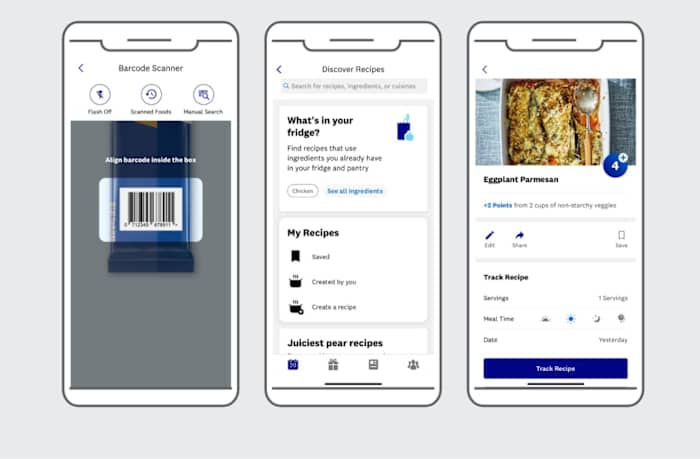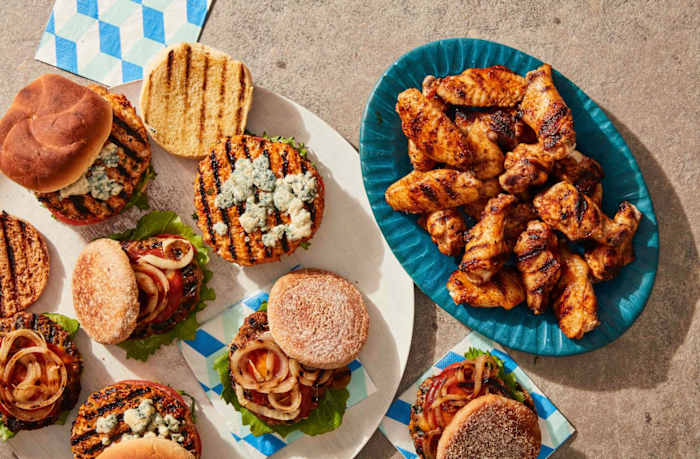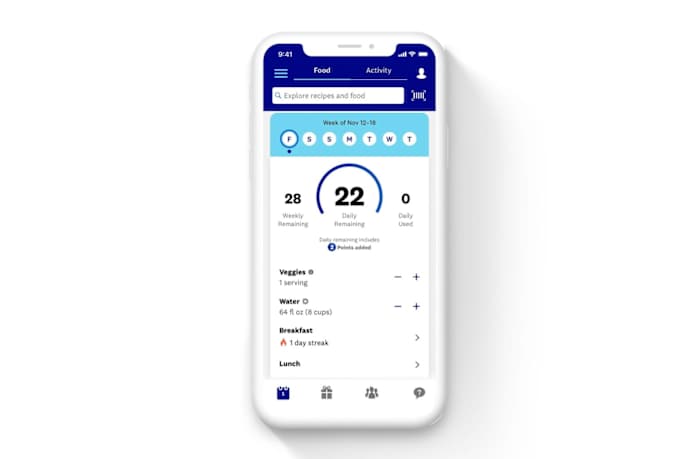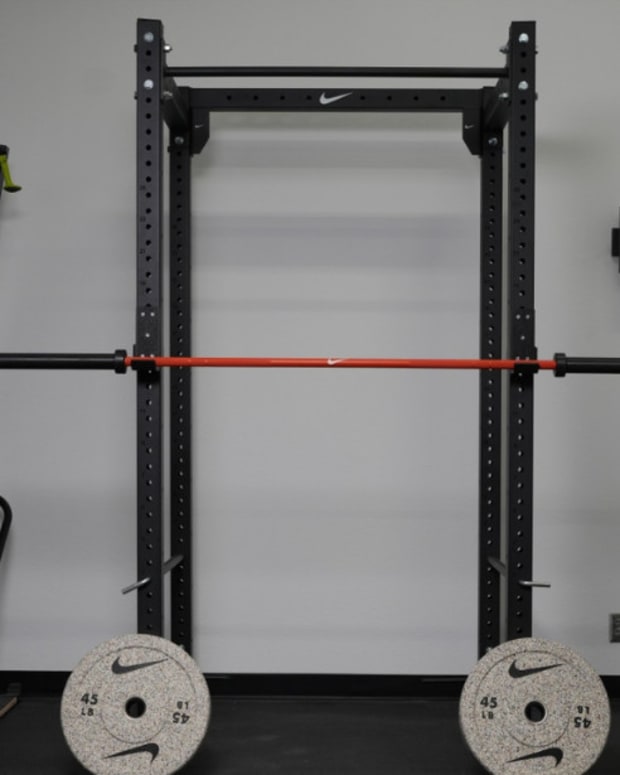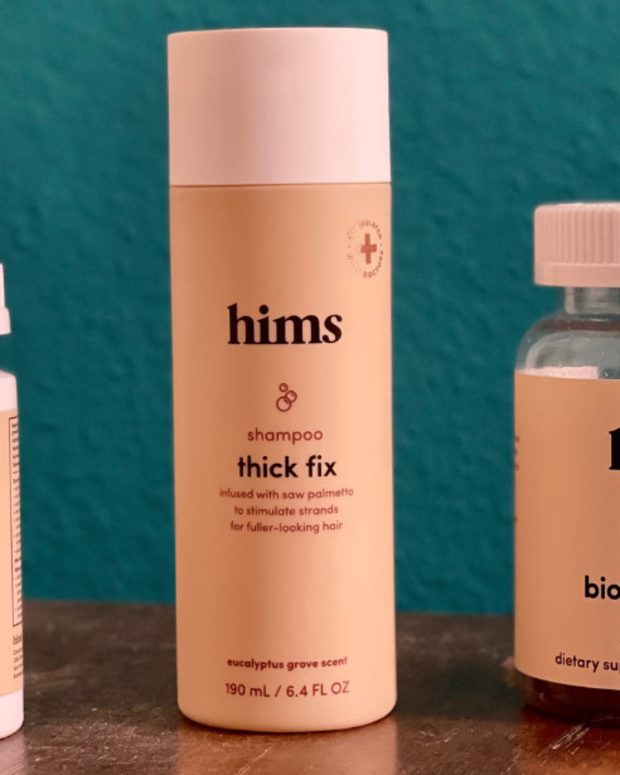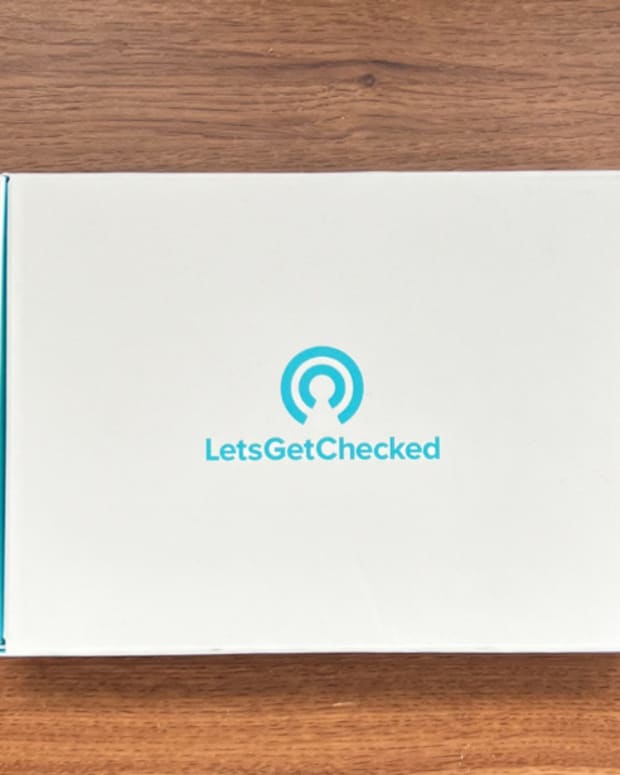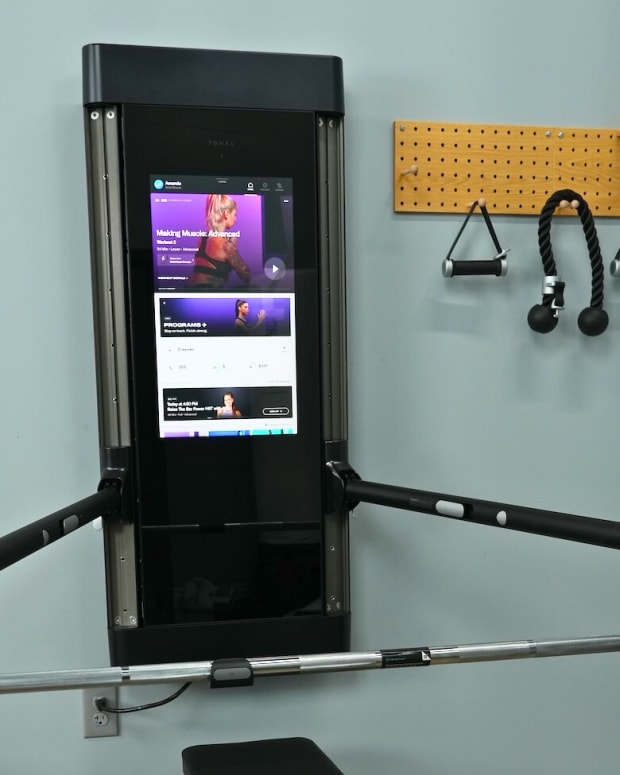The products featured in this article have been independently reviewed. When you buy something through the retail links on this page, we may earn commission at no cost to you, the reader. Sports Illustrated editorial staff are not involved in the creation of this content. Learn more here.
WeightWatchers is well known as a weight loss program. In recent years, celebrity spokespeople and WW members like James Corden and Oprah Winfrey have helped keep WW in the news. This article will review the WW program, how the program works and if the WW app or program might be a good fit for you in 2024.
What To Know About WeightWatchers (WW)
- Cost: Price will vary depending on the plan you choose and current offers, but will range from $10 to $50/month (SI readers get an exclusive 50% discount)
- Key features: Individualized plans based on lifestyle and food preferences, food tracking and community support
- Best for: A generally healthy person who has moderate weight loss goals and doesn’t mind eating similar foods frequently. (More on this below.)
If you have a history of eating disorders, disordered eating or any underlying health conditions it is important to discuss your weight loss goals with a doctor first. Always consult with a medical professional before starting a new diet, exercise routine and/or weight loss program to ensure it’s right for you.
What is Weight Watchers (WW)?
WeightWatchers is a commercial weight loss program. WW was created in May 1963 in New York when the founder, Jean Nidetch, became frustrated that there was no peer support in a weight loss program she participated in. Nidetch started a support group with some of her friends to share weight loss tips, and WeightWatchers grew from there.
With six decades of experience in behavior change, WW inspires millions of people around the world to adopt healthy habits for real life, thereby allowing people to live the life they love while losing the weight they want. WW was named the #1 recommended weight loss program by a 2020 IQVIA survey of 14,000 doctors who recommended weight loss programs to patients.
For the past four decades, more than 130 published papers and randomized controlled trials have examined the efficacy and impact of the WW program, over 35 of which are rigorous, randomized control trials.
What is the WeightWatchers Program?
There are three options to participate in WW currently. All options include full access to the WW app.
The membership options include:
- Digital only: Includes full WW app access
- Unlimited Workshops + Digital: Includes full WW app access plus access to virtual or in-person workshops depending on local availability and your preference
- One-on-one Coaching + Digital: Includes full WW app access, plus weekly 15-minute check-ins with a personal WW coach who will help you review your progress and set goals for the next week
What Features are Included in the WeightWatchers App?
- Individualized plans, built for each member based on their lifestyle and food preferences
- PersonalPoints Budget and individualized ZeroPoint foods list
- Food and water tracker
- Barcode scanner for easy shopping
- A database of 12,000 recipes and 355,000 foods
- On-demand exercise videos (for all levels)
- 24/7 access to chat with a Coach
The WW app is available on both Apple iOS and Android devices. Within the WW app, you can sync with other health apps and smartwatches to pull in workout-tracking, such as the Apple Watch, Apple Health, Fitbit, Google Fit, Garmin, MapMyRun and Daily Burn.
Getting Started With WeightWatchers
Choose a plan that fits into your lifestyle, answer questions about your demographics and weight loss goals, complete WW’s proprietary assessment to determine your ZeroPoint foods and Points budget, explore the app and begin your journey.
Choose a plan between the three options:
Create your account
As you create your account, you’ll need to answer some questions about demographics as well as foods you love and activity level. WW utilizes this information in order to develop your unique PersonalPoints Budget and ZeroPoint foods list.
After completing the initial questions, you can immediately start using the WW app or a desktop browser to log foods and exercise, make a meal plan or learn more about the WW program.
Key Components of WeightWatchers
Customization
The WW program is personalized and designed to provide a unique experience for each member. WW's current program is called the PersonalPoints Program because the plan is based on how you answer the questions in the initial intake and set-up process. Based on answers to questions about your activity level, desired weight loss and preferred types of foods and snacks, you'll be given a Points Budget and ZeroPoint foods list made just for you.
Additionally, vegetarian and vegan-friendly options are included when picking ZeroPoints foods; and if you’re living with diabetes, there is a diabetes-tailored plan available.
Point values instead of calorie counting
On the WW program, every food and beverage has a number value based on calories, protein, fiber, unsaturated fat, saturated fat and added sugar. Points make knowing what to eat simple, by boiling down complex nutritional data into one easy-to-understand number. This framework makes knowing what to eat even easier, guiding you towards a healthier pattern of eating while still keeping everything on the menu.
Not all calories are created equal: 300 calories of broccoli will give you greater health benefits than 300 calories of soda, because different types of nutrients impact our health differently. This is why WW looks beyond a food’s calorie content and takes into consideration all relevant nutrition information.
Tracking
Daily food tracking is a hallmark quality of the WW program. In addition to tracking food, the app also encourages users to track daily water intake, sleep habits and daily physical activity. Weighing yourself weekly is an encouraging component of the weight loss plan, but users have the option to skip weigh-ins and still participate in the program.
Community support
WW is grounded in community, from their in-person and virtual workshops to digital community within the WW app. All three of the current WW membership options offer human support from WW coaches if desired. The app includes a chat function where you can request to chat with a WW coach, and users have access to Zoom or live coaching with the Unlimited Workshops or one-on-one coaching plan. In addition, there is a WW members-only social network, Connect, wherein people participating in WW post encouraging stories, recipes, polls, questions and weight loss progress or food photos.
Does WeightWatchers Work?
The WeightWatchers website has an extensive research page that lists publications from the last 44 years that support WW programs and methods. There is a science team within WeightWatchers that includes registered dietitians, clinical psychologists, behavioral scientists and other weight-loss experts. WeightWatchers is also advised by a Scientific Advisory Board composed of credentialed third-party nutrition and weight loss experts.
Further to the proven success of the science-backed program, there is a claim that users can expect to lose one to two pounds per week while following the WW program.
Most of the studies listed on the references page seem to be based on previous versions of the program rather than the current PersonalPoints program, but most of the key parts of the program remain the same. When launching the new program, WW tested it internally with members for two years. Then WW's PersonalPoints program was studied with a six-month independent clinical trial at the University of Connecticut with 150+ participants.
Participants have had some doubts about the long-term maintenance of weight loss, but many studies have shown weight loss while using WW.
What Will I Eat While Using WeightWatchers?
WW does not give you a calorie goal or a set meal plan, and a key feature of the program is that no foods are off-limits. Instead of a rigid plan, you are given a daily PersonalPoints budget and an additional weekly allotment of points to stay within.
The program gives you a daily PersonalPoints budget based on your answers to questions and the ZeroPoints foods you choose. My budget for PersonalPoints was 18 at the start of the day, without factoring in exercise or adding any additional PersonalPoints. This number felt quite low when I started tracking my typical foods at breakfast and lunch.
The program emphasizes that your ZeroPoint foods should be “go-to” foods that you can frequently and consistently lean on, without measuring or tracking. Your ZeroPoint foods list is specific to you; these foods are described as "hearty, everyday foods" in the app and are partially based on foods you say you like in the initial intake process. For instance, my ZeroPoint foods included avocado, eggs, tofu, fruits, beans, potatoes and non-starchy vegetables.
Your ZeroPoint foods can be adjusted at any time. Options include:
- Fiber-rich non-starchy vegetables prepared in any manner – spinach, squash, eggplant, cucumbers, peppers, beets, green beans
- Fruits – all fruits, such as apples, bananas, peaches, berries (this option is only available for members not following WW’s diabetes-tailored plan)
- High Protein foods – eggs, poultry, fish, beans, lentils, tofu, tempeh
- A higher carbohydrate food – options include oatmeal, brown rice and quinoa, whole wheat pasta, potatoes and sweet potatoes (these options are only available for members not following WW’s diabetes-tailored plan)
Foods that are of higher point values tend to be high in carbohydrates, low in fiber, higher in simple sugars and contain fat. Members can add an additional point to your daily points budget by eating one cup of non-starchy vegetables an unlimited number of times. If you track 60 ounces of water daily, you also get one point added to your daily points budget. There are no "red" or off-limit foods, and there are several ways you can add Points to your daily or weekly budget - from getting in movement, to eating more non-starchy vegetables, to reaching a daily water goal. You can also rollover up to 4 unused Points each day.
There's a library of 12,000+ recipes and more than 355,000 foods listed within the app with a good variety of types of foods. The points values for a serving of the recipes are displayed. You can search the recipes by foods you have on hand at home to give you ideas on what to cook for a meal or snack.
What We Liked About WeightWatchers
The current WW program strongly focuses on eating more non-starchy vegetables and fruits, which most Americans struggle with, according to reports from the Centers for Disease Control and Prevention (CDC). I liked that there are no calorie amounts in the app and that the emphasis is on eating healthier, more protein-rich foods instead of only restricting foods. There's no villainization of a food or macronutrient group.
The WW app encourages many healthy habits, like drinking more water, exercising regularly and getting more sleep. The language used for the education lessons is light and encouraging. Lessons are short, though longer-form podcasts and videos are available in the WW app.
The in-app exercise videos would be helpful for those who do not already have an exercise program in place or would like new content to try. There was a good variety of different levels of exercise abilities, from stretching videos to more high-impact cardio and HIIT classes.
Food tracking was easy within the app. You can easily switch between portion sizes and types of portions (tbsp, cup, serving, pound, bunch), and the barcode scanner worked very well and quickly after allowing access to the phone camera. While logging foods, I didn't come across any items that weren't already in the database, but I still found the barcode scanner to be a fun and quick tool to use for packaged items.
There's a nice community support element to the WW program, even if you choose the most basic and cheapest option, the Digital-only program. I used the 24/7 chat with a Coach feature and was connected to a human coach within a few minutes. She gave me creative meal ideas with ZeroPoint foods when I asked a question about what I could eat for dinner after running out of points after an afternoon snack. I liked that she said to "track your food and move on" if I didn't hit my targeted points for the day, even though I didn't ask what would happen if I ate more than I should have for my daily goal. No shaming or guilt language was used even though I was on track to consume more than my allotted points for the day.
What We Didn't Like About WeightWatchers (Drawbacks)
Though WeightWatchers was intended to change to more of a wellness-based program, it's still a diet mostly focused on weight loss and calorie restriction.
Some flexible weekly points can be used, but you may still feel hungry if you don't eat a diet primarily based on ZeroPoint foods. On one day, a healthy and balanced breakfast meal that I entered (one serving of oats, 1.5 tbsp peanut butter and a handful of blackberries) was half of my Daily Points allotment since I didn't choose oats as one of my ZeroPoints foods when I started the program. After eating lunch with white rice, non-starchy vegetables and lentils and a snack of crackers on this same day, I didn't have enough points left to eat a satisfying serving of foods outside of my ZeroPoint foods for dinner. To meet my daily goal, I would either need to exercise, eat more non-starchy veggies to add more points, or only eat ZeroPoints foods for the rest of the day to stay within my daily allotted points.
One other potential drawback is that it may be challenging for some to eat intuitively on this plan because your points budget for the day changes as you eat more non-starchy foods, drink water or exercise. While the program helps promote flexibility (e.g. you can dip into your Weekly Points each day, rollover unused Points, etc.) I found if you don't eat a similar pattern of foods every day, it might be hard to manage your points budget from day to day.
With any weight loss plan that relies on tracking food and behaviors, the process can become tedious and hard to stick to long-term. That said, the WW app's interface is easy to use, so it requires less willpower than some other competitors to track all meals, snacks, exercise and other activities.
Finally, when using the WW program, I felt that there were too many additional opt-ins for related but unnecessary purchases, especially since users pay for the program. I was offered "expert-recommended tools" to buy right after signing up for the program that consisted of packages for items like a WW branded scale, WW cookbooks, a water bottle and WW branded foods. In-app purchases and links to options to buy are included right on the main tracking page of the app, like a trial of additional obé fitness classes, and WW branded foods and drinks.
If you're interested in Noom and how it compares to WW, check out our Noom vs WeightWatchers review.
Who is Weight Watchers Best For?
- A generally healthy person who has moderate weight loss goals
- People who desire accountability and support from an external platform and online community or digital coach
- A person who doesn't mind eating similar foods frequently and using them in different combinations
- People who would like to avoid counting calories or monitoring specific macronutrients like carbs, protein, or fats
- People who have tried some of the free food and exercise tracking programs like MyFitnessPal and would like more support, community engagement or a different counting approach to weight management
Who Shouldn't Use WeightWatchers?
As with all weight loss programs, WW should be avoided if you've ever had issues that include disordered eating, an eating disorder or orthorexia. Though the program doesn't require you to weigh yourself to participate, it does suggest weighing in weekly, so it should be avoided if weight-focused talk or weight-based goals cause you distress. If you have a complex medical history, diet restrictions or medical conditions, it would be best to work with a physician and/or registered dietitian for one-on-one care that's specialized for you based on your medical history.
The Price of WeightWatchers
WW was shown to be the most cost-effective of the commercial weight-loss programs in research by Duke University. Seasonal promotions (for example, 3 months free) are available throughout the year. Right now, WW is offering an exclusive 50% off offer for SI readers.
The WW weight loss programs increase in price with the personalized coaching you receive. At the time of this article, the Digital only option starts at $5.29 per week, the Unlimited Workshops + Digital starts at $10.37 per week and the One-on-one Coaching + Digital program starts at $13.83 per week.
Charges are incurred monthly and auto-renew. There is an early termination fee of $65.90 if you cancel within the first three months, or $42.95 within the first four to five months of a six-month commitment. Be sure to read the fine print containing automatic renewal and cancellation information when signing up.
FAQs
Here's everything else there is to know about WeightWatchers (WW).
Why am I not losing weight on WeightWatchers?
This may depend on a variety of factors. Check in with yourself: are you accurately counting your points? If so, you may need to re-evaluate the foods you've chosen for your ZeroPoints list to ensure you are properly nourishing your body. Additionally, ensure you are taking care of yourself with proper rest, hydration and movement.
What is the cheapest way to join WW?
Not sure if you're ready to commit to WeightWatchers? You can try a Core membership free for 30 days. You can also keep an eye out for seasonal membership discounts. Right now, WW is offering an exclusive 50% off offer for SI readers.
Is WW just counting calories?
While WeightWatchers doesn't involve calorie counting, it still does require you to track your food intake. Every food and beverage has a number value based on a variety of things including calories, protein, fiber, unsaturated fat, saturated fat and added sugar.
How many points are you allowed per day on WW?
Your personalized daily points allowance will depend on a variety of factors including activity level, desired weight loss and preferred types of foods and snacks. You'll start by filling out an intake form, and from there you'll receive a custom plan, which will include a Points Budget and ZeroPoint foods list.
Is WW hard to cancel?
You can easily cancel your membership via the WeighWatchers site, and cancellation will be processed right away.
The Bottom Line
WW might be a beneficial weight loss program for people who wish to lose weight without counting calories. Less expensive or free diet tracking options are available if you won't use the additional features, like the WW coach, workshops, or Connect feature. If you have a medical condition or a complex relationship with food or exercise, working with a physician and/or registered dietitian before using WW would be best.
Prices are accurate and items in stock at time of publishing.

